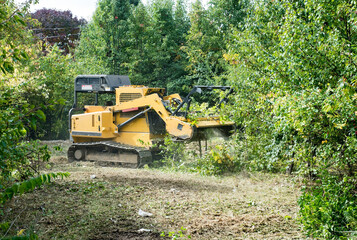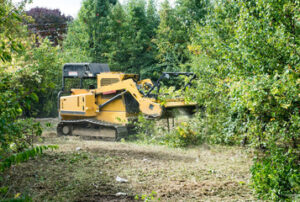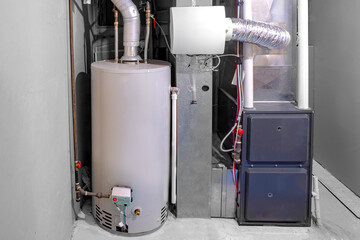Custom Blinds and Shades KY offer a stylish and functional way to control light and privacy in any space. They are designed to fit windows perfectly, providing a polished and tailored look.
Unlike off-the-shelf options, custom treatments allow for greater design flexibility and enhanced functionality. The ability to choose materials, colors, and styles ensures that the final result complements the room’s overall aesthetic.
Light control is one of the most important benefits of custom blinds and shades. Natural light enhances the atmosphere of a room, but too much glare can be uncomfortable. Custom treatments allow precise adjustment of light levels to create the desired ambiance. This flexibility also protects furniture and flooring from fading caused by prolonged sun exposure.
Privacy is another key advantage of custom blinds and shades. Standard window treatments often leave gaps that compromise privacy. Custom options are measured and installed to fit snugly, eliminating light leaks and ensuring complete coverage. This level of privacy creates a more secure and comfortable living environment.
Custom blinds and shades enhance energy efficiency by regulating indoor temperatures. Insulating materials and light-blocking fabrics help reduce heat transfer through windows. In summer, they block out heat and prevent air conditioning from working overtime. In winter, they retain warmth and reduce heating costs. This energy efficiency leads to lower utility bills and improved comfort year-round.
Material selection plays a major role in the performance and appearance of custom blinds and shades. Natural fabrics like cotton and linen create a soft, inviting look. Synthetic materials offer durability and resistance to moisture and fading. Wood and faux wood bring warmth and texture, while metal adds a modern, industrial touch. Each material offers unique benefits suited to different environments.
The style of custom blinds and shades can transform the overall feel of a room. Roman shades provide a classic, elegant look with soft folds that add texture. Roller shades offer a minimalist, clean appearance with smooth operation. Vertical blinds are ideal for large windows and sliding doors, allowing easy adjustment for light and privacy. Cellular shades add insulation and a modern touch with their honeycomb design.
Color and pattern choices allow for personalization and creative expression. Neutral tones create a calm, balanced atmosphere, while bold colors make a statement. Patterns add visual interest and can tie together different design elements in a room. Layering different textures and colors creates depth and a cohesive look. Customization ensures that the final product reflects personal style and enhances the room’s character.
Motorization adds a layer of convenience and modern functionality to custom blinds and shades. Automated systems allow for remote control and scheduling of light adjustments. This is particularly useful for hard-to-reach windows or large installations. Smart home integration enables voice control and syncing with other automated systems. Motorized options combine style with cutting-edge technology for a seamless user experience.
Blackout blinds and shades are ideal for bedrooms and media rooms where light control is essential. Special lining and tight-fitting designs block out light completely. This creates a dark and restful environment for better sleep and improved focus. Blackout treatments also reduce noise and enhance privacy for a more peaceful atmosphere.
Layering different types of window treatments adds both function and style. Combining sheer shades with blackout blinds allows for flexible light control throughout the day. Decorative drapes can be paired with functional shades to add warmth and elegance. Layering also increases insulation and soundproofing for a more comfortable environment. This approach combines the best of both form and function.
Moisture resistance is a key consideration for bathrooms and kitchens. Materials like faux wood, vinyl, and treated fabrics resist warping and mold growth. These materials maintain their appearance and function even in high-humidity environments. Easy-to-clean surfaces also make maintenance simple and efficient. This ensures that blinds and shades remain fresh and attractive over time.
Child and pet safety is a major factor when choosing custom blinds and shades. Cordless designs eliminate the risk of entanglement and provide a cleaner look. Motorized options remove the need for manual adjustment, reducing potential hazards. Safety locks and breakaway cords provide added protection. These thoughtful features create a safer living environment for families.
UV protection extends the lifespan of furniture, flooring, and artwork. Custom blinds and shades with UV-blocking materials reduce sun damage and fading. This preserves the color and integrity of interior furnishings over time. Adjustable slats and light-filtering fabrics allow for controlled exposure without sacrificing natural light. UV protection combines function with long-term preservation of interior investments.
Acoustic control is another benefit of custom blinds and shades. Thicker materials and cellular designs absorb sound and reduce noise pollution. This is especially beneficial in busy urban areas or homes with large windows. Enhanced soundproofing creates a quieter and more peaceful living environment. This attention to acoustic comfort adds to the overall functionality of custom treatments.
Seasonal adjustments are easier with custom blinds and shades. Light-filtering shades provide a soft glow during spring and summer. Insulating blinds and blackout shades offer warmth and privacy during fall and winter. The ability to switch between different levels of light and insulation enhances year-round comfort. This adaptability ensures that the home remains comfortable and stylish in any season.
Professional measurement and installation ensure that custom blinds and shades fit perfectly. Expert installers take precise measurements and address any irregularities in window frames. Secure mounting and proper alignment prevent sagging and uneven operation. Professional installation guarantees a polished and seamless look. This attention to detail enhances both the appearance and function of the treatments.
Maintenance and care are simple with custom blinds and shades. Dusting and vacuuming keep fabrics and slats clean and fresh. Spot cleaning with mild solutions preserves the color and texture of materials. Moisture-resistant options can be wiped down for quick and easy cleaning. Regular maintenance ensures that blinds and shades remain attractive and functional for years.
Natural light diffusion creates a warm and inviting atmosphere. Sheer shades and light-filtering fabrics soften harsh sunlight. This reduces glare and creates a comfortable indoor environment. Adjustable slats allow for precise control of light levels throughout the day. The ability to balance natural light enhances the overall ambiance of a room.
Exterior-facing blinds and shades add curb appeal and protection. Weather-resistant materials withstand exposure to sun, rain, and wind. Exterior treatments provide an additional layer of insulation and light control. They also enhance privacy and security by limiting visibility from the outside. This added protection improves both the functionality and appearance of the home.
Design consistency throughout a home creates a cohesive look. Matching blinds and shades in different rooms tie together various design elements. Customization allows for slight variations in texture and color while maintaining overall harmony. Coordinating treatments create a polished and professionally designed feel. This attention to design consistency elevates the entire home’s aesthetic.
Sustainability is becoming increasingly important in interior design. Eco-friendly materials like bamboo and recycled fabrics reduce environmental impact. Low-impact manufacturing processes and non-toxic finishes promote healthier indoor air quality. Sustainable options combine style with environmental responsibility. This reflects modern values and enhances the long-term appeal of the treatments.
Custom blinds and shades offer unmatched versatility and performance. They combine style, function, and personalization to meet individual needs. Professional design and installation ensure that each treatment fits perfectly and performs flawlessly. The ability to control light, privacy, and insulation enhances comfort and efficiency. Custom treatments elevate both the look and functionality of any space.











